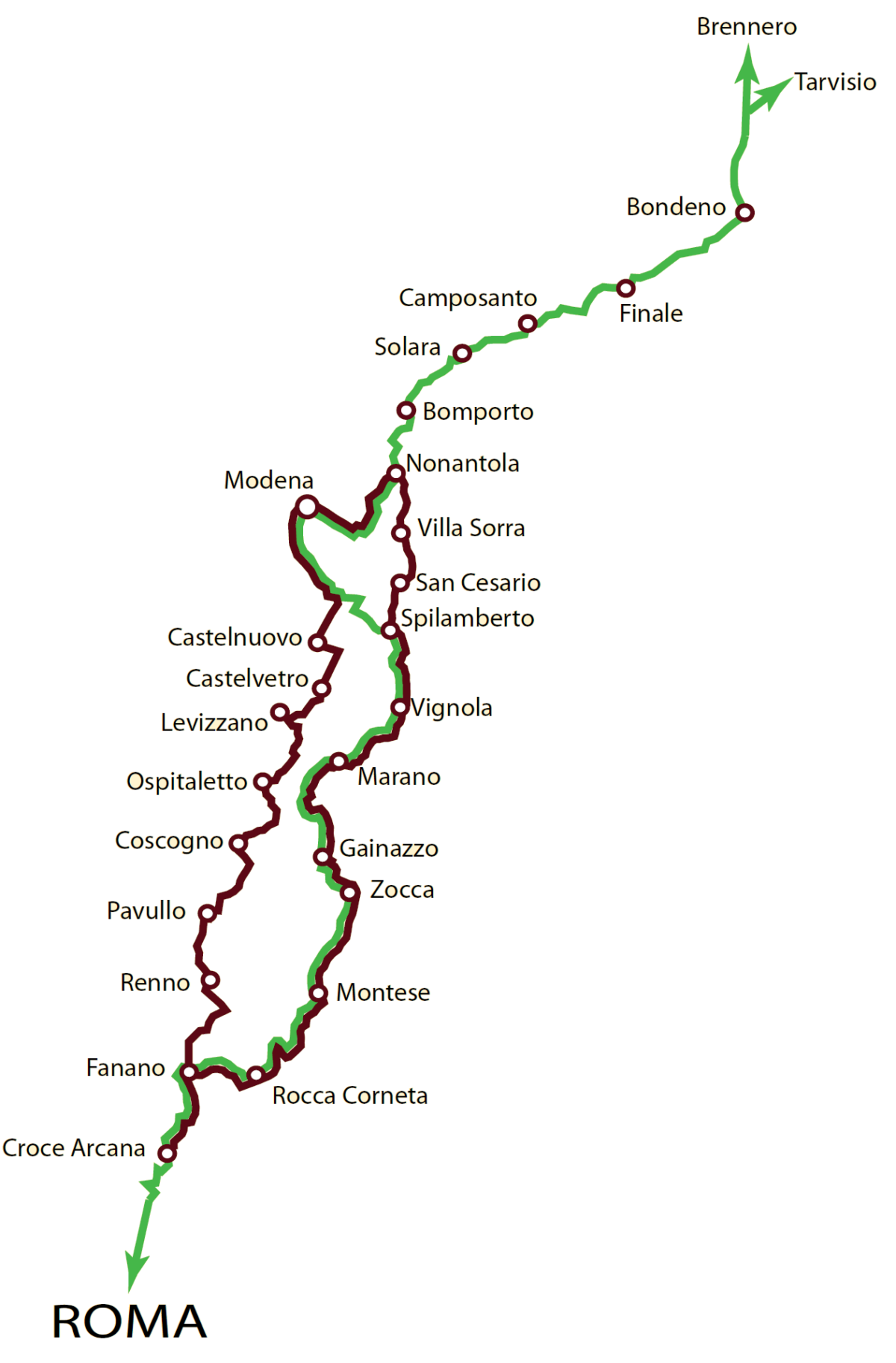
The Via Romea Nonantolana rediscovers a historic path that for over 12 centuries has connected northern Italy and central Europe with Rome, across the Po valley and the Tuscan-Emilian Apennines. The pivot of the route has always been the Nonantola Abbey which, together with Cluny and Canterbury was among the most important and powerful Benedictine abbeys in Europe, an obligatory passage for Popes, emperors, armies, merchants and above all pilgrims.
The pilgrim and the wayfarer of the 21st century arrive today in our territory through the "Nonantolana-Lombard" Romea Strata, which connects the Alpine passes of the Brennero and Tarvisio up to the Po and Nonantola. From here you can choose the western route towards Modena and Castelnuovo, and then go up to Castelvetro, Levizzano, Ospitaletto, Pavullo and finally reach Fanano, or opt for the eastern route, towards San Cesario and its beautiful Romanesque church, and then join to the Romea Strata route in Spilamberto.
In Fanano the right and left Panaro branches of the Romea Nonantolana reunite. Once in Ospitale, however, it is possible to choose the variant in the direction of Lake Scaffaiolo and Passo della Calanca, covering some of the best preserved and most evocative stretches of the ancient path. Then continue towards Pistoia, to then connect to the Via Francigena at Fucecchio-San Illuminated. However, the two sections of the Via Romea Nonantolana can also be read as a ring itinerary that can be covered in 7-10 days on foot.